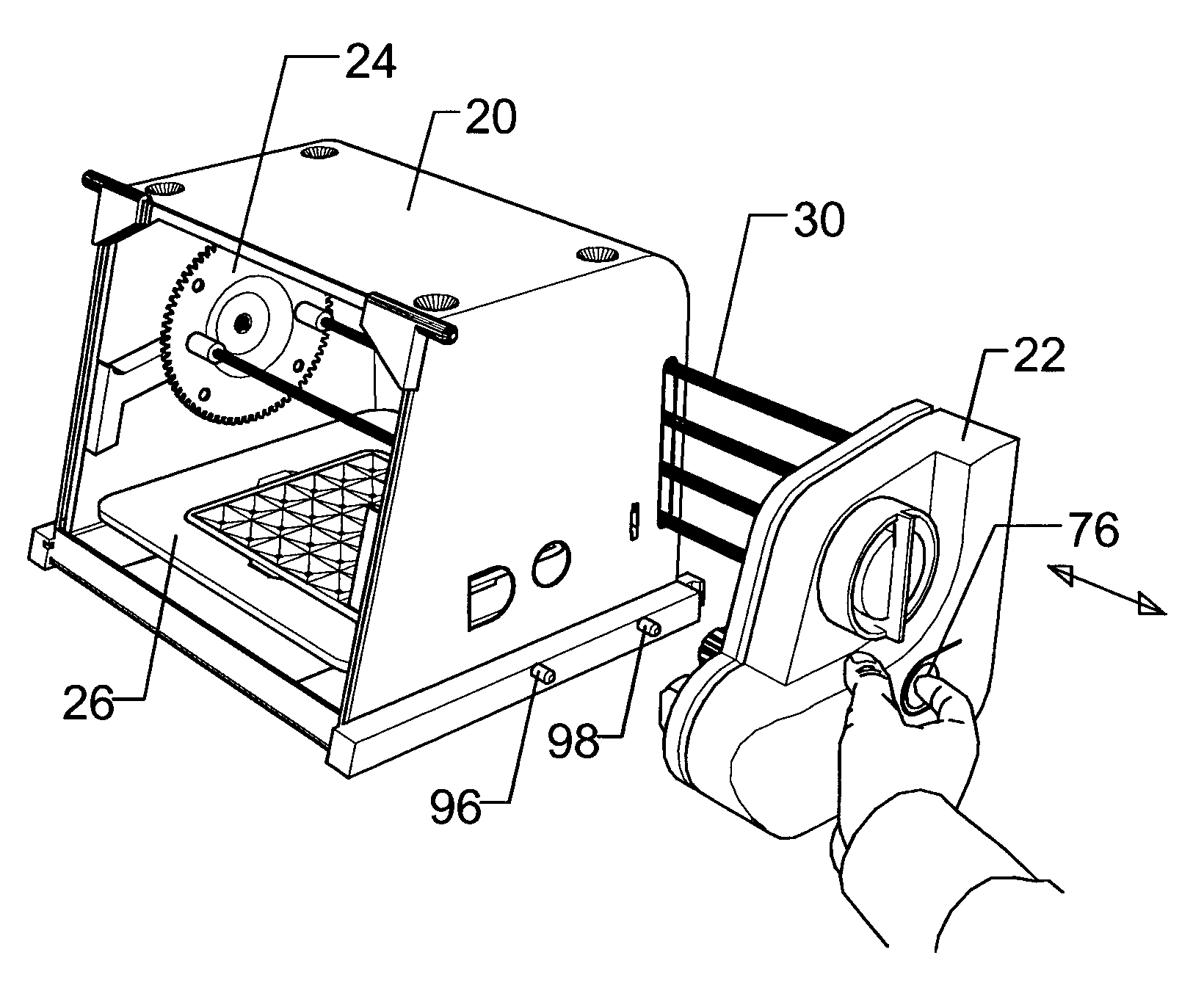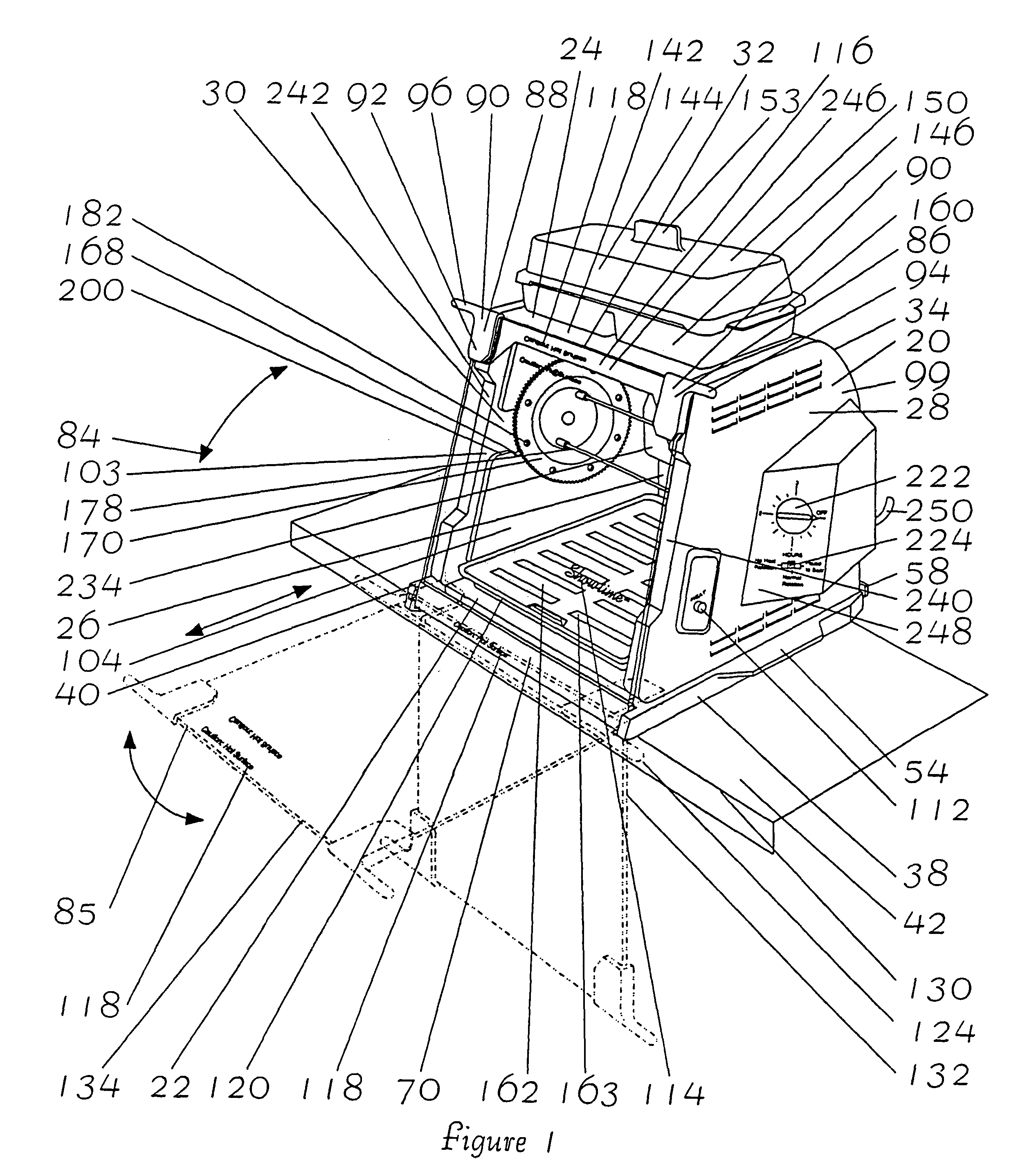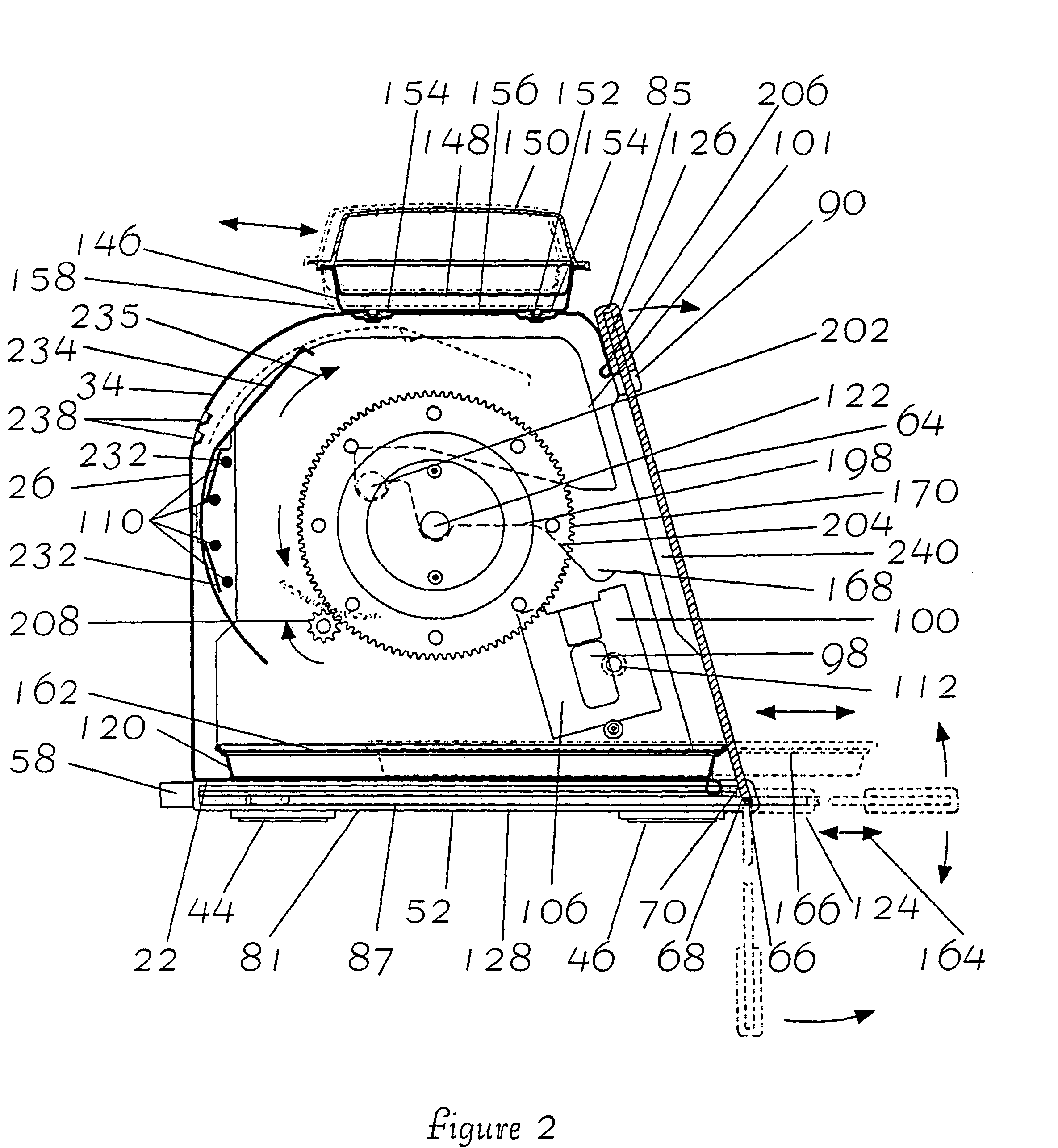Unlike other
cooking methods, unhealthy
grease and oil are allowed to drip off all sides of the food while it is being cooked.
Prior art rotisserie designs are often inherently expensive to manufacture, unnecessarily complicated, difficult to use, fail to optimize
space use, and / or difficult to clean.
Such construction makes it difficult to check cooking progress.
Moreover, opening the
doors on these enclosed oven units generally lets out the hot cooking air, which, in turn, slows cooking and makes gauging cooking times even more difficult.
Cooking results can therefore be unpredictable on these units, particularly on
charcoal fired models due to variances in the heat source and outside air.
Furthermore, the exteriors of these units generally get very hot and thus present safety considerations, which may require warning labels and extra caution on the part of the users.
Charcoal grills have additional inconveniences of having to start and maintain their hot coals.
Starting
charcoal fires or using bottled or other forms of gas may also present safety hazards, and hot
grease dripping onto glowing
charcoal, gas flames or onto hot electric coils may
flare up.
In addition, the single rod spits used on most of these rotisseries may be difficult to use and may not do an adequate job of supporting the food being cooked.
These typically have
limited capacity, such as being able to cook only a chicken weighing five pounds or less.
Such capacity may be unsuitable for families or for use at parties.
Also, many of these units have small door openings and hot oven walls which make it difficult to insert and remove food, and usually when the door is opened it swings to one side where it is still in the way of loading or unloading foods, especially when the door is hot.
Because these units rotate foods about a
vertical axis, the top half of the food usually becomes dry even when the chef takes the inconvenient trouble to regularly baste.
Furthermore, there are usually no provisions for putting smaller foods closer to the heat source where they might cook faster.
Finally, these units have very hot exteriors, which may present safety hazards requiring warning labels and extra user care.
These typically have capacity limitations similar to those found on countertop rotisseries with vertical spits.
They combine these limitations with the difficulty of use of outdoor rotisseries with their inadequate, awkward and limited use single rod spits.
Many of these countertop toaster ovens also present
fire safety and
smoke hazards from heat rods, which are directly next to
grease drip pans.
They also have tight door openings and small oven cavities which make it difficult to insert and remove foods, particularly when the units are hot.
Furthermore, many of these units have thermostatically controlled heating elements, which cycle on and off and thus lengthen rotisserie cooking time.
Without efficiently removing heat, rotisserie oven interiors may overheat.
These units also typically have small door windows and little or no interior lighting, which makes it difficult to view cooking progress.
Their spits are also very difficult to maneuver into place and pull out of the oven, both due to the small oven cavities and because of poor mounting design.
In addition, when the
doors open on these units, they generally swing down or swing to one side where they are in the way of loading and unloading food, particularly when the
doors are hot.
The conventional rotisserie also has doors that are generally complicated in construction, typically having a small piece of glass framed with several pieces of
metal, creating an
assembly, which is then permanently hinged to the cooking cavity.
The units also have no means to bring smaller foods closer to the heat source where they might cook faster.
They are usually limited as to what they can cook.
Small foods or foods that can't be skewered may not be mountable for cooking.
Even where baskets that fit on the spits are available, they are difficult to use and generally do a poor job of holding some types of food.
They occupy a large amount of space.
This is particularly detrimental for indoor units where kitchen space may be at a premium.
Few current rotisseries adequately display the food being cooked, which, with rotisserie cooking, can be a taste tempting show in itself.
Cleanup is also very difficult on most units.
This is because few components can be removed for cleaning, and areas, which require a lot of cleaning, may be difficult to access, as an example, behind the heating elements.
Their electronic components and / or heating elements can not be readily detached from the structures which are in contact with food, thereby making them difficult to clean safely and not capable of being subjected to dishwashers.
While some of the aforementioned cooking appliances have food compartments in the form of cups or containers that are easily removed from the rest of the device and easy to clean, certain devices, particularly rotisseries and toaster ovens, have heating elements and other electronic components that are integrally formed with the
enclosure exposed to food, thereby making the devices difficult to clean and use.
 Login to View More
Login to View More  Login to View More
Login to View More 


